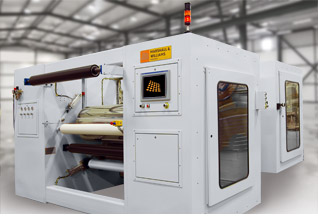

January 15 2019

In our previous articles on Machine Direction Orienters (MDOs), we reviewed aspects of machine configuration and considerations related to process conditions that affect the design and efficacy of these machines. The takeaway that should be most obvious is that, while any given MDO may appear to be a simple arrangement of heated, driven rollers, determining the optimal MDO configuration for a specific application and capacity is where the real challenge lies.
Typical products made through an MDO process include barrier films and other flexible packaging applications, adhesive tapes, decorative ribbons, high-temperature microporous membranes, optical films, draw straps and tear tapes, MD shrink films, and other specialty films. Independent from the application-specific process conditions (process temperatures, draw ratios, neck-in, etc.) that we discussed previously, an MDO needs to be correctly designed to deliver the desired line speed and throughput as well.
How can I ensure I’m purchasing the correct MDO for my application and production requirements, or at least minimize the risk associated with my MDO project?
A good place to start is working with a machine builder that not only has experience building MDOs for the desired application but also can demonstrate a range of products that reflects an understanding of the varying requirements of different applications. If a machine builder only has a single MDO product solution, chances are that it is at best going to be a compromise for your application, and at worst, may not provide the results for which you are looking.
Working with an experienced machine builder that also has facilities in which lab or pilot scale trials can be conducted further increases the probability that the machine you order will perform as expected. From a customer’s perspective, trials may be thought of primarily as a means of determining feasibility and refining product/formulation development. For the machine builder, however, results from trials can be used to verify process condition assumptions, confirm material-specific heat transfer calculations, and ensure that other design considerations are correct.
Other considerations when designing an MDO are:
The reality is that for most customers, a custom-designed and built MDO will deliver the best value and maximize return on investment. The key is to make sure that you choose a machine builder with the experience and know-how to determine the optimal configuration for your situation.